author: Zero Shen
from: LANE Machinery Groups
Behind the rich aroma of coffee lies a huge amount of coffee grounds waste. The global coffee industry produces approximately 20 million tons of coffee grounds waste annually, with industrial coffee grounds (from instant coffee powder factories, roasting factories, and large beverage factories) accounting for a significant proportion. These seemingly useless residues actually contain valuable resource potential. Converting coffee grounds into fertilizer not only alleviates environmental pressure but also creates circular economic value.
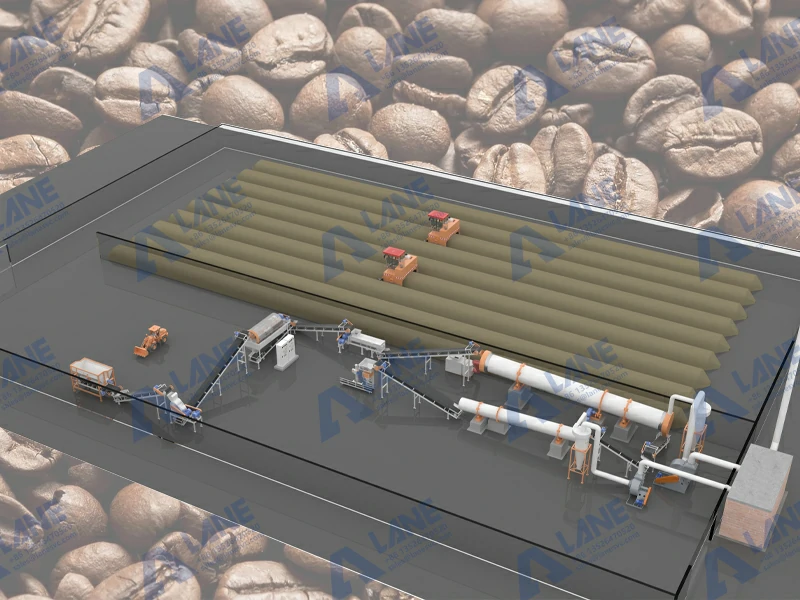
Main ingredients:
Key features:

Organic fertilizer made from industrial coffee grounds has unique advantages:
Nutritional Balance: Rich in organic matter, nitrogen, phosphorus, potassium, and various trace elements, with a relatively slow and sustained release of nutrients.
Soil Improvement:
Physical Properties: Significantly increases soil organic matter content, improves soil aggregate structure, enhances water retention, nutrient retention, and aeration.
Chemical Properties: Neutralizes alkaline soil; its mildly acidic nature is particularly beneficial for acid-loving plants such as blueberries, azaleas, and camellias. Provides abundant organic nutrients.
Biological Properties: Provides a rich food source for beneficial soil microorganisms (bacteria, fungi, actinomycetes), activating the soil ecosystem.
Environmentally Friendly: Achieves resource utilization of industrial solid waste, reduces landfill burden and greenhouse gas emissions (coffee grounds landfill produces methane), aligning with the principles of a circular economy.
Economic Benefits: Transforms waste into valuable resources, reduces fertilizer production costs, and creates new value chains.
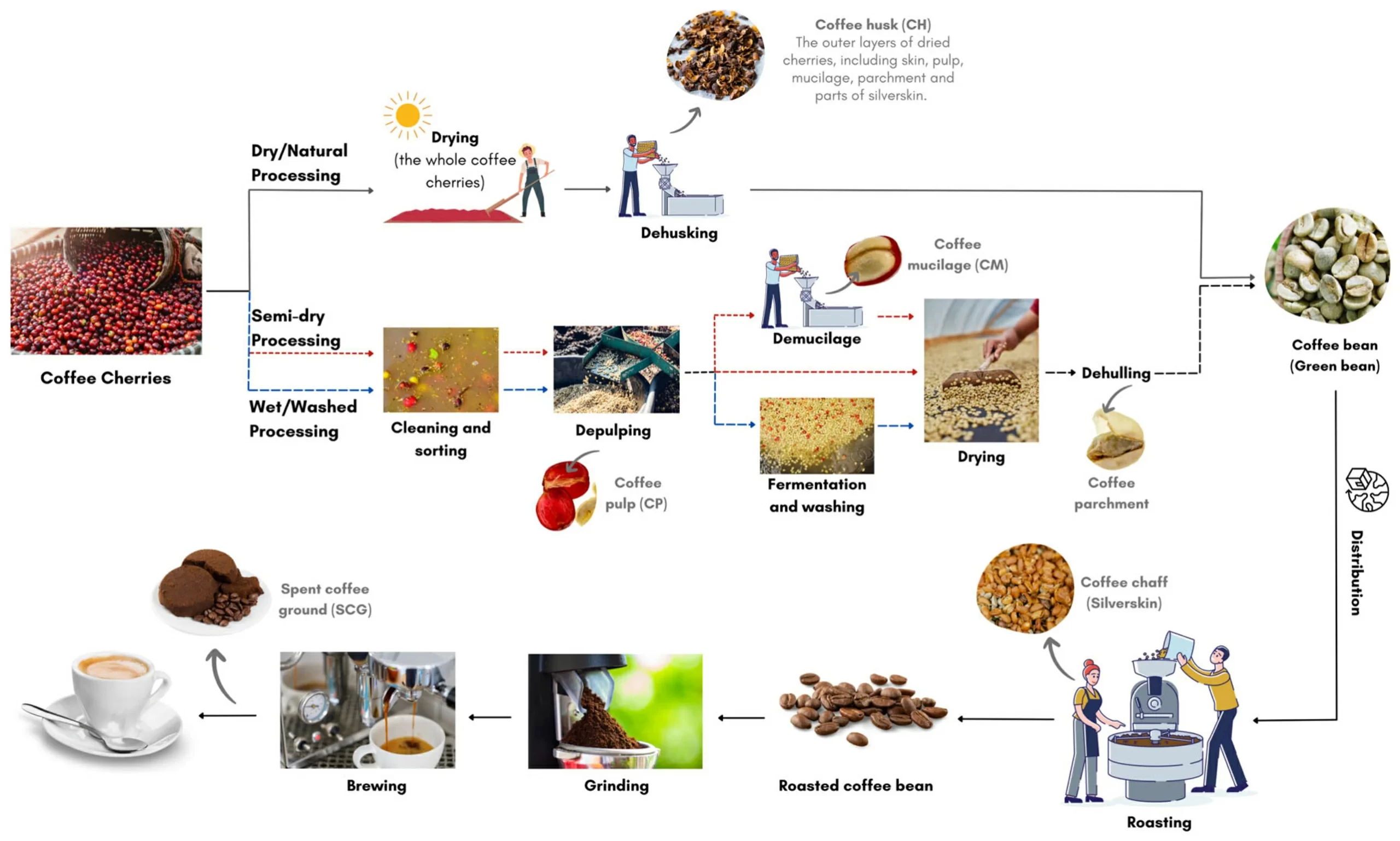
Core Process: Aerobic Composting Fermentation
Pre-treatment:
Impurity Removal: Use vibrating screens, magnetic separators, air separators, etc., to remove impurities such as plastic, metal, and large pieces of filter paper.
Moisture Adjustment: Fresh coffee grounds have excessively high moisture content (60–70%), so high-carbon conditioners (e.g., crushed straw, wood chips, rice husks, mushroom residue, and fallen leaves) are added to absorb moisture while adjusting the C/N ratio to a range suitable for microorganisms (25–30:1). Target moisture content after mixing: 55-60%. Use a wheel loader or belt conveyor for mixing. If necessary, use a dryer (e.g., drum dryer) for pre-drying (higher cost).
pH adjustment (optional): If the acidity is too strong (pH < 5.5), add a small amount of alkaline substances (such as lime, wood ash, or phosphate rock powder) to adjust the pH to near neutral (6.5–7.5), which is conducive to microbial activity. Monitor using a pH meter.
Grinding (optional): If coffee grounds are severely clumped, use a grinder to break them down, increasing surface area to facilitate fermentation.
Main fermentation (high-temperature stage):
Pile construction: Pile the pre-treated material into windrows or place it in fermentation tanks/reactors. Pile size must ensure insulation (typically 2–3 meters wide, 1.5–2 meters high).

Aeration and turning:
Row Pile: Use a self-propelled turning machine or tank-type turning machine to turn the pile regularly (every 1-2 days initially, with reduced frequency later) to ensure oxygen supply, even heat dissipation, and break up clumps. Turning is critical for controlling temperature, humidity, and oxygen levels.
Reactor: Use a fermentation tank/tower with a forced ventilation system for oxygen supply. This method has high automation, good environmental control, and a small footprint, but requires significant investment.
Temperature control: Microbial activity rapidly raises pile temperature to 55-65°C (up to 70°C or higher), maintaining this high temperature for 5-15 days. This stage effectively kills pathogens, insect eggs, and weed seeds, while degrading fats and easily decomposable organic matter. Use temperature probes for real-time monitoring.
Moisture Management: Fermentation heat causes moisture evaporation. Timely moisture supplementation (sprinkling) is required to maintain a moisture content of 50-55%. Moisture levels are monitored using a rapid moisture meter.
Post-Fermentation (Cooling and Maturation Stage):
After the high-temperature phase, the temperature gradually decreases to near ambient temperature (this may take 3-8 weeks).
This stage primarily involves further humification and stabilization of organic matter to form humus.
Reduce turning frequency (once a week or less) to ensure the pile remains loose and well-aerated.
Regularly inspect the pile to ensure there is no foul odor, no mosquito or fly infestation, and the material is dark brown, loose, and free of clumping.
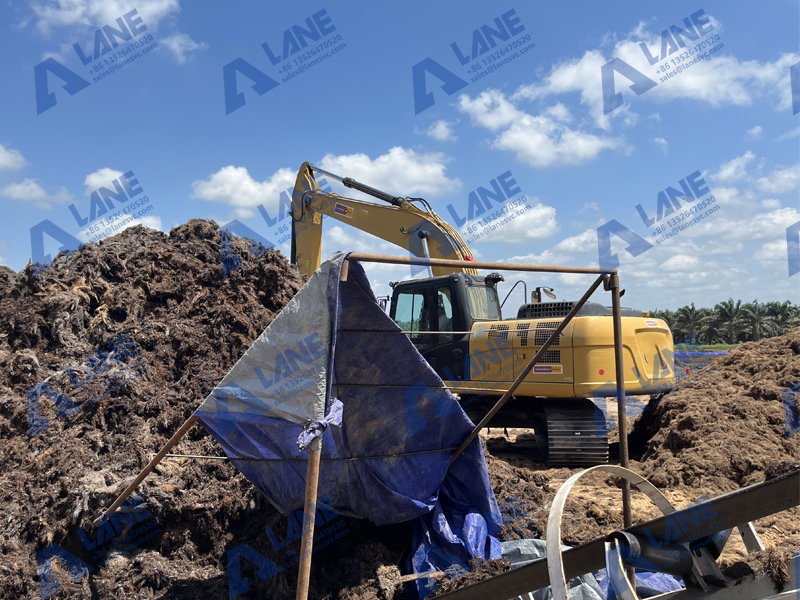
Finishing (optional):
Screening: Use a drum screen or vibrating screen to remove coarse material that has not been completely decomposed (such as conditioning agent fragments) to obtain a finished product with uniform particle size.
Grinding: Use a chain grinder or hammer mill to grind the fertilizer into finer particles, enhancing its marketability.
Granulation: Use a disc granulator or organic fertilizer extrusion granulator to produce granular fertilizer, which is convenient for storage, transportation, and application. A small amount of binder (such as bentonite or molasses waste liquid) may need to be added before granulation.
Packaging: Use an automatic packaging scale for quantitative packaging.
Main Equipment:
Pre-treatment: Vibrating screen, magnetic separator, crusher (optional), mixing equipment (mixer, loader), dryer (optional).
Fermentation: Tumbler (stack/trough type), ventilation system (reactor), temperature/humidity monitoring system.
Finishing: Screen, crusher, granulator, packaging machine.
Auxiliary: Conveying equipment (belt conveyor, screw conveyor), forklift, odor control system (biological filter, chemical scrubber tower – especially essential when the plant is located near residential areas).
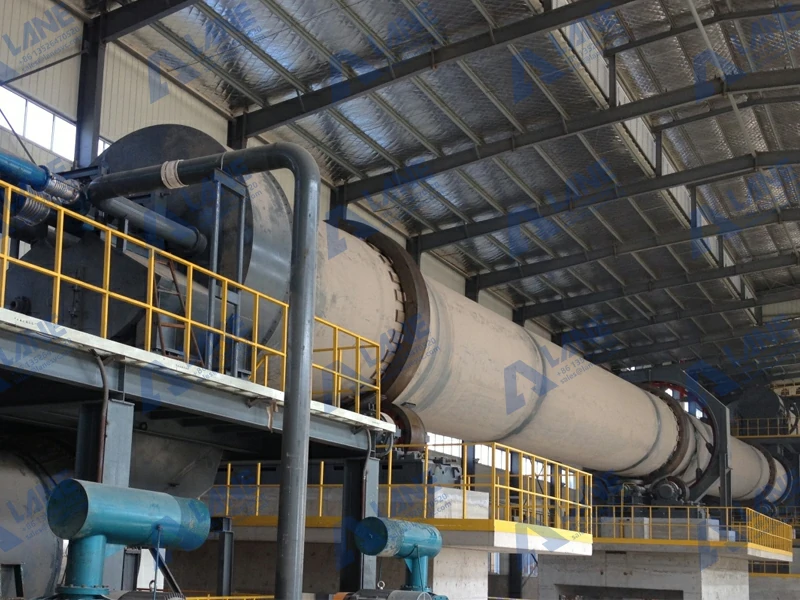
External Conditions:
Site:
Adequate Area: Sufficient space must be provided for raw material storage, fermentation zones (row piles or trenches), post-fermentation zones, processing areas, and finished product storage. Row pile systems require a large area (thousands to tens of thousands of square meters).
Ground Hardening: The ground in fermentation zones must be cement-hardened and treated to prevent seepage (to avoid contamination of soil and groundwater by leachate).
Good drainage: The site should have a slope or drainage ditches.
Away from sensitive areas: Away from residential areas and water sources (at least 500 meters away), downwind of the prevailing wind direction.
Environmental protection facilities:
Leachate collection and treatment system: The fermentation process produces a small amount of leachate (high-concentration organic wastewater), which must be collected and treated (e.g., sprayed back onto the pile, anaerobic digestion, or sent to a wastewater treatment plant).
Odor control system: During the initial fermentation stage, odors such as ammonia and hydrogen sulfide may be produced, requiring odor control devices such as biological filters to meet environmental emission standards.
Water and electricity supply: Stable and reliable power supply (to drive equipment) and water source (for moisture regulation and site cleaning).
Personnel: Technical workers (to operate equipment and control fermentation parameters) and managers.
Policy approvals: Obtain necessary permits such as environmental impact assessments and emissions permits.
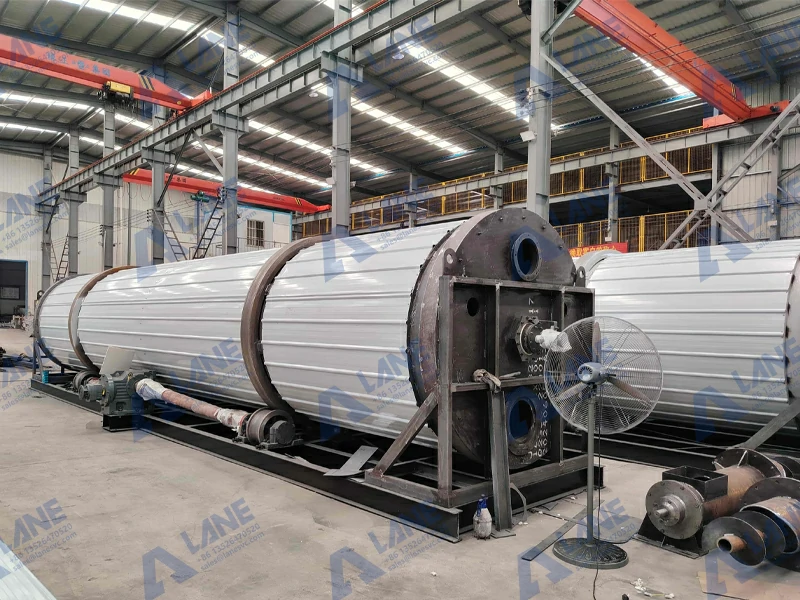
Volume/Weight Reduction: During the composting process, organic matter undergoes decomposition and mineralization, and moisture evaporates, resulting in a significant reduction in the volume and weight of the material.
Conversion Ratio (Empirical Values): Under normal conditions, 100 tons of fresh industrial coffee grounds (moisture content approximately 65%) + an appropriate amount of conditioner (dry weight approximately 30–50 tons) can produce approximately 60–75 tons of organic fertilizer (moisture content around 30%) after thorough composting and maturation. The specific ratio is influenced by factors such as pretreatment methods (whether dried), conditioner type and dosage, fermentation efficiency, and moisture control.
Product: Fully decomposed and stabilized organic fertilizer that meets the standards of the “Organic Fertilizer” (NY/T 525-2021) specification.
In the wave of industrial coffee grounds resource utilization, the LANE brand leverages advanced organic fertilizer production technology and comprehensive service capabilities to provide global customers with one-stop turnkey solutions from raw materials to finished products, particularly excelling in the efficient conversion of high-value organic waste such as coffee grounds.
Core Advantages and Technical Highlights
Modular Customized Design:
The LANE coffee grounds ogranic fertilizer production line supports modular combinations, allowing flexible configuration of pre-treatment, fermentation, and finishing modules based on customer raw material characteristics (such as coffee grounds moisture content, oil content, and impurity types), production capacity requirements (1–100 tons/day), and site conditions. For coffee grounds characteristics, core enhancements include:
High-Efficiency Impurity Removal System: Multi-layer vibrating screens + powerful magnetic separation + airflow sorting precisely remove plastics, metals, and lightweight impurities.
Intelligent conditioning system: Precise metering and addition of conditioning agents such as straw/wood chips, dynamically adjusting moisture content (55-60%) and C/N ratio (25-30:1), integrated with pH online monitoring and automatic addition of alkaline materials, addressing the challenges of high oil content and high acidity in coffee grounds.
Patented fermentation tank design: The enclosed tank is equipped with an intelligent aeration + turning system, improving oxygen utilization by 30%. The high-temperature phase (55-65°C) is maintained for over 10 days, thoroughly decomposing fats and eliminating pathogens.
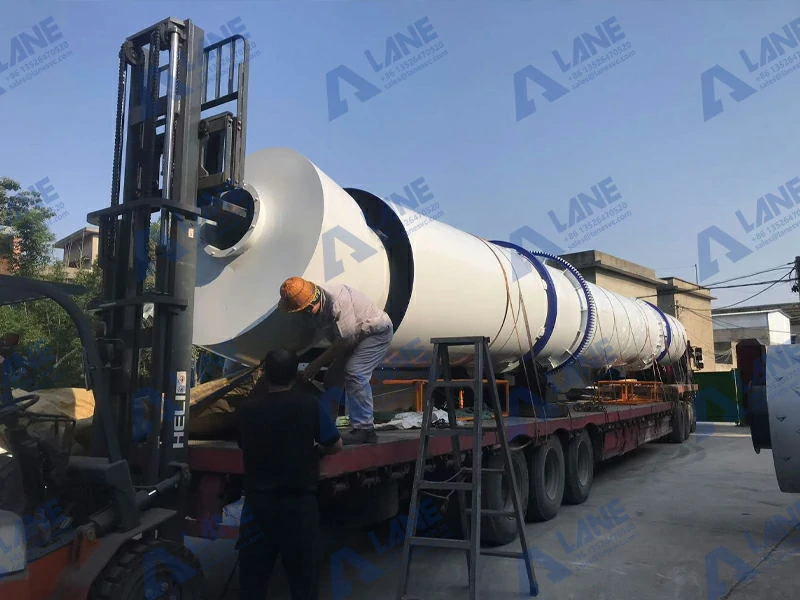
Low-energy, high-efficiency fermentation process:
Using windrow high-temperature aerobic fermentation technology, compared to traditional pile-style fermentation:
Fermentation cycle shortened by 40% (coffee grounds fully decomposed in just 20-25 days)
Land area reduced by 60%, suitable for projects with limited land availability
Integrated biological filter deodorization system with over 95% odor removal efficiency, meeting stringent environmental standards
Full-cycle service support
| Service Phase | Services | Customer Value |
| Solution Design | Free raw material testing → Customized process package → Equipment selection → Factory layout → Economic benefit analysis | Avoid technical risks and ensure return on investment |
| Equipment Delivery | Global standardized production (ISO9001) → Sea freight packaging → Customs clearance assistance → Equipment insurance | Shortening delivery cycles and reducing cross-border logistics risks |
| Overseas Installation | Engineers provide on-site installation guidance → Multilingual operation training → Trial operation and debugging → Local maintenance team certification | Achieve “zero experience start-up” and ensure production capacity meets standards |
| Continuous Maintenance | Remote technical guidance → Global spare parts supply → Five-year warranty → Process optimization and upgrade solutions | Maximize equipment lifecycle, continuously reduce costs and increase efficiency |
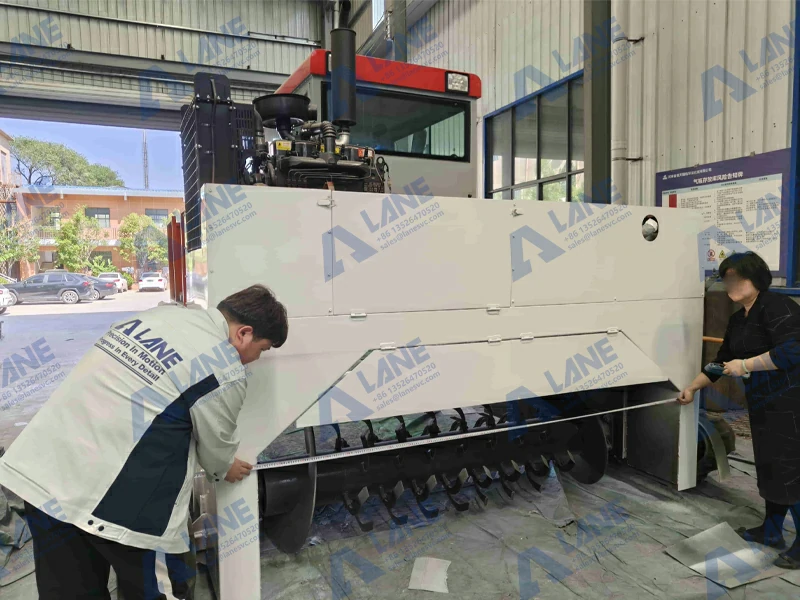
Conclusion
The successful conversion of industrial coffee grounds into organic fertilizer relies on reliable engineering equipment and professional services. The LANE brand, with its modular intelligent fertilizer production lines as the foundation, deeply integrates coffee grounds conversion process expertise to empower clients with end-to-end value chain solutions from planning and design to overseas implementation. As the aroma of coffee wafts through the production line, what was once waste will eventually return to the earth as organic fertilizer—this is not only a cycle of resources but also the green industrial civilization co-created by LANE and its global partners.
> > Explore your coffee grounds recycling plan? Click to get a LANE customized solution.